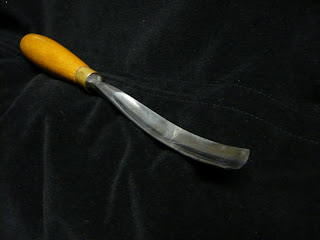I have just purchased a Power Monkey eXplorer mobile charger with solar-slave and plan to test it here in the UK and on my next trip to Lapland. I will then write a review of the product on my blog.

Also included in the kit is a variety of mains adapters for all over the world, adapters for charging a variety of electronic equipment including ; iPOD, PSP, Nokia and many more.
It should prove particularly useful at my cabin as there is now power there for recharging camera and mobile phone batteries.
The power unit can be charged via the mains, the solar-slave or a laptop via a USB port.
Detailed specifications and more general information can be found on the
websiteThe best price I could find for this product was
here
So far I am very impressed with the Power Monkey explorer, but watch this space for a more detailed review over the next month.


 For Louie, 90% of the work was done with this gouge chisel which is currently a favourite tool to work with, second only to my knife.
For Louie, 90% of the work was done with this gouge chisel which is currently a favourite tool to work with, second only to my knife.




















